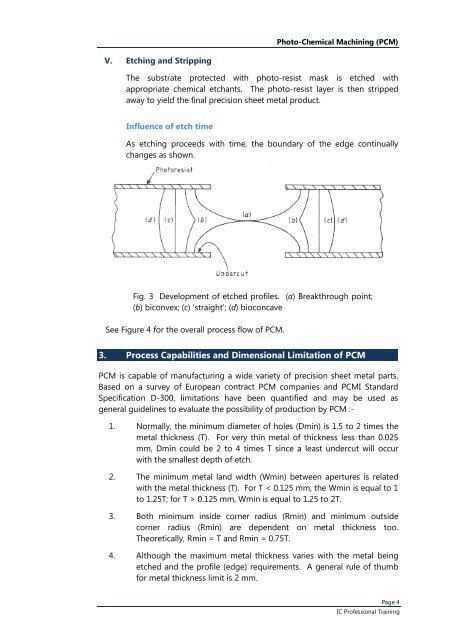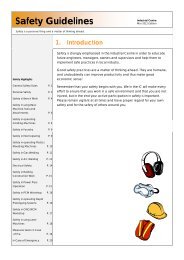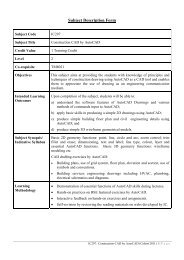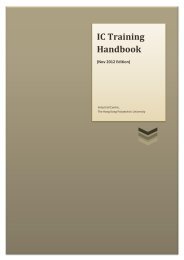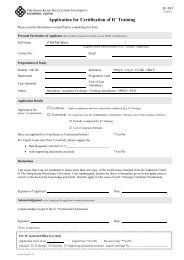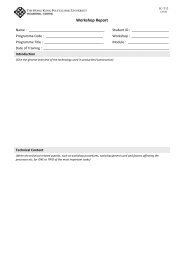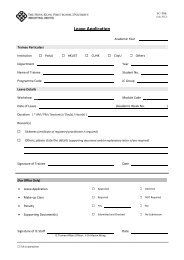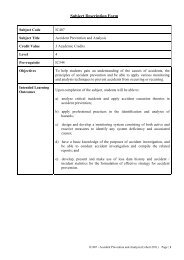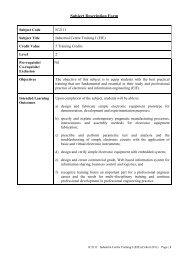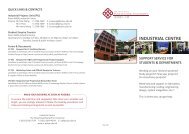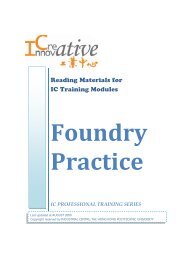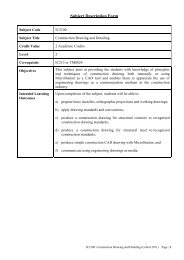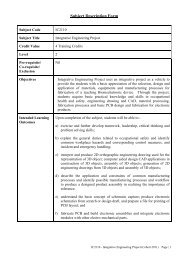Photo-Chemical Machining - The Hong Kong Polytechnic University
Photo-Chemical Machining - The Hong Kong Polytechnic University
Photo-Chemical Machining - The Hong Kong Polytechnic University
- No tags were found...
Create successful ePaper yourself
Turn your PDF publications into a flip-book with our unique Google optimized e-Paper software.
<strong>Photo</strong>-<strong>Chemical</strong> <strong>Machining</strong> (PCM)V. Etching and Stripping<strong>The</strong> substrate protected with photo-resist mask is etched withappropriate chemical etchants. <strong>The</strong> photo-resist layer is then strippedaway to yield the final precision sheet metal product.Influence of etch timeAs etching proceeds with time, the boundary of the edge continuallychanges as shown.Fig. 3 Development of etched profiles. (a) Breakthrough point;(b) biconvex; (c) ‘straight’; (d) bioconcaveSee Figure 4 for the overall process flow of PCM.3. Process Capabilities and Dimensional Limitation of PCMPCM is capable of manufacturing a wide variety of precision sheet metal parts.Based on a survey of European contract PCM companies and PCMI StandardSpecification D-300, limitations have been quantified and may be used asgeneral guidelines to evaluate the possibility of production by PCM :-1. Normally, the minimum diameter of holes (Dmin) is 1.5 to 2 times themetal thickness (T). For very thin metal of thickness less than 0.025mm, Dmin could be 2 to 4 times T since a least undercut will occurwith the smallest depth of etch.2. <strong>The</strong> minimum metal land width (Wmin) between apertures is relatedwith the metal thickness (T). For T < 0.125 mm, the Wmin is equal to 1to 1.25T; for T > 0.125 mm, Wmin is equal to 1.25 to 2T.3. Both minimum inside corner radius (Rmin) and minimum outsidecorner radius (Rmin) are dependent on metal thickness too.<strong>The</strong>oretically, Rmin = T and Rmin = 0.75T.4. Although the maximum metal thickness varies with the metal beingetched and the profile (edge) requirements. A general rule of thumbfor metal thickness limit is 2 mm.Page 4IC Professional Training


